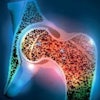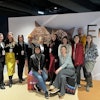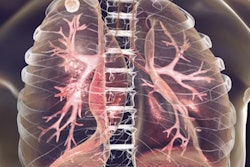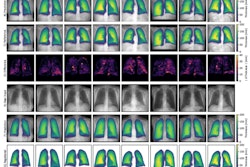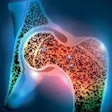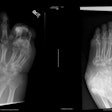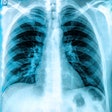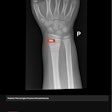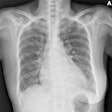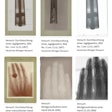Tuberculosis (TB) remains one of the deadliest infectious diseases worldwide, especially in medically underserved regions like rural Tanzania. In this Q&A interview by the German Roentgen Society (DRG), radiologist Dr. Amir H. Bigdeli reports on a pilot project that uses AI specifically in areas where there are no specialists on site. What began as a spontaneous clinical observership has developed into a groundbreaking example of globally responsible radiology -- technically innovative, data protection-compliant, and medically lifesaving.
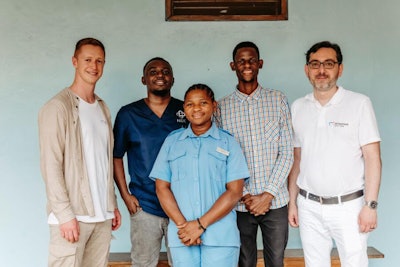 From left to right: Benedikt Lenz (Artemed Foundation), Omam Henry Kaijage (medical technologist for radiology, MTR), Prisca Anga (administrator), Daniel Joshua (MTR), Dr. Amir H. Bigdeli (chief physician radiology, Artemed Clinic, Munich South). All photos courtesy of Dr. Bigdeli and DRG.
From left to right: Benedikt Lenz (Artemed Foundation), Omam Henry Kaijage (medical technologist for radiology, MTR), Prisca Anga (administrator), Daniel Joshua (MTR), Dr. Amir H. Bigdeli (chief physician radiology, Artemed Clinic, Munich South). All photos courtesy of Dr. Bigdeli and DRG.
Q: Dr. Bigdeli, you initiated a project in Nyangao, Tanzania, that uses AI to detect tuberculosis. How did this come about?
A: My first trip to Nyangao in September 2019 was a defining experience. The x-ray department at St. Walburg's Hospital -- a central facility for the region -- was in an alarming state. The analog x-ray machine was over 50 years old and barely usable, and functional deficiencies, such as a defective cassette holder, made basic examinations impossible. Radiation protection was also problematic: damaged lead aprons and incomplete shielding contributed to a situation that endangered both patients and staff.
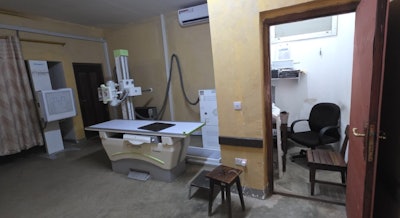 The setup in the x-ray department at St. Walburg's Hospital in 2019.
The setup in the x-ray department at St. Walburg's Hospital in 2019.
And yet the medical commitment was impressive. Every day, two radiographers cared for dozens of patients, many of whom had travelled for days to receive medical assistance. It became clear to me that the shortage of radiological specialists is not just a logistical problem but also has a direct impact on people's survival. This was particularly evident in the case of TB. This disease is very prevalent in the country, but the radiological signs are often subtle, especially in atypical or early findings. Without well-founded image interpretation, such cases simply go unnoticed.
Q: Why do you rely on AI, and how does it help?
A: I quickly realized that traditional strategies, such as deploying radiologists, can only provide limited support. What is needed in such regions is scalable, robust diagnostic support, and this is precisely where AI comes into play. While it is often used to increase efficiency in our Western healthcare systems, in countries with structural undersupply, it can close a fundamental gap as virtual expertise across the board.
In cooperation with the Artemed Foundation and the Munich-based medtech company deepc, we worked for over three years to make this idea a reality. The onsite x-ray technology was first modernized, including the installation of a digital system with improved radiation protection. At the same time, I tested several AI providers in my Munich department. Ultimately, we chose CXR, a product from the Romanian startup Rayscape. This software is CE-certified, recognizes 148 thoracic pathologies, including TB, and processes both upright and supine chest radiographs.
Q: What hurdles were encountered during implementation, particularly with regard to data protection and infrastructure?
A: Data protection was a key issue. Patient rights must be respected in Tanzania, too, especially when it comes to cloud-based image analysis. Together with deepc, we implemented a solution that complies with the requirements of ISO/IEC 27001:2022. The deepcOS platform handles the pseudonymization of patient data onsite and transmits the encrypted x-ray data to the cloud, and only then is AI analysis performed. The authorities were actively involved in the process, which was crucial for acceptance.
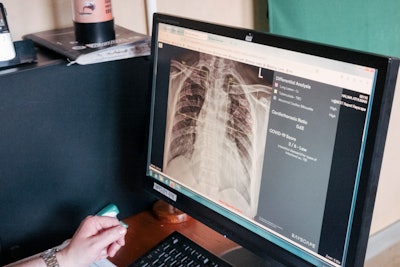 Working with the Artemed Foundation software.
Working with the Artemed Foundation software.
The first live training session with the local team took place on 9 May 2025, and it was a milestone event. Partners from Germany, Romania, and the U.K. joined virtually. In the very first instance, AI detected a case of TB that had escaped non-radiologists. It was a eureka moment for everyone involved.
Q: Can you tell us a little more about Nyangao?
A: Nyangao is a small town in southeastern Tanzania. It lies at an altitude of 182 meters above sea level and is best known for St. Walburg's Hospital, which was founded in 1959 and has 220 beds. It serves not only the local population but also patients from other parts of Tanzania and even from neighboring Mozambique. The region is predominantly agricultural, with the cultivation of rice, maize, millet, cashew nuts, and sesame being among the main activities. The population consists mainly of members of the Wamwera and Wamakonde ethnic groups.
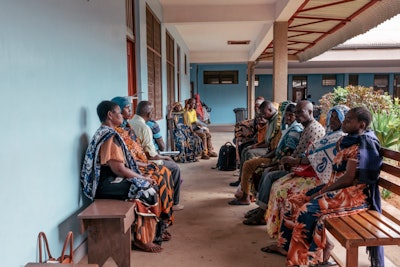 Patients in the hospital waiting area.
Patients in the hospital waiting area.
Q: What can radiologists learn from this project?
A: I believe the project in Nyangao exemplifies what radiological expertise supported by modern technology can achieve in global healthcare. AI won't replace our profession, but it can help where we can't be physically present. It can save lives -- not as competition, but as an extension of our expertise.
For radiologists in Germany, this also opens up an ethical perspective: We are part of a globally networked profession. Our knowledge, our technology, our standards can -- and should -- reach beyond our clinical boundaries. This project is just one example of how to achieve a significant impact with minimal resources. I see AI in radiology not just as a tool for process optimization, but as a bridge to the future, locally and globally.
Editor's note: This is an edited version of a translation of an article published on 10 June in German online by the DRG. To read the original version, go to the DRG website: drg.de/de-DE/11195/radiologie-innovation-in-tansania/

